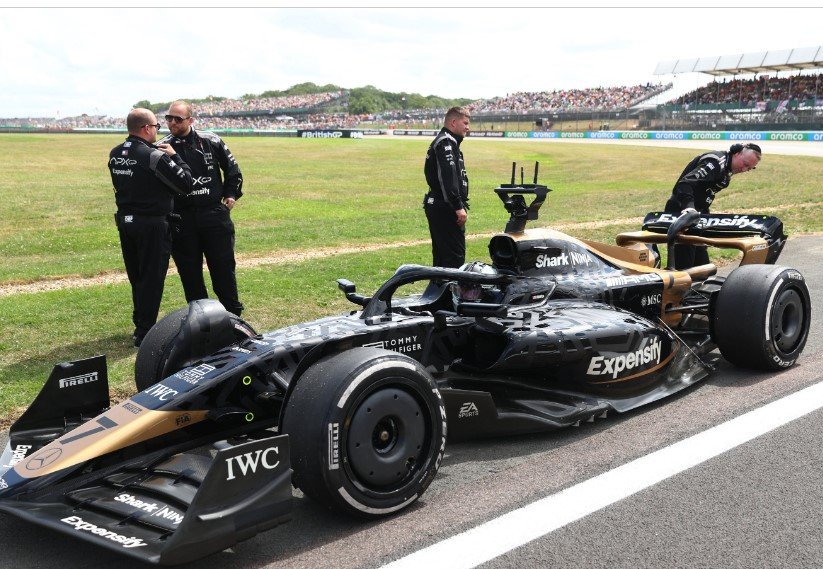With just days to go before the release of F1, a new film shot on real tracks and starring Brad Pitt, buzz around its groundbreaking tech is stealing the spotlight as much as the storyline itself.
Turns out, what viewers will see from inside a screaming Formula 1 cockpit wasn’t captured by a bulky IMAX rig or even a GoPro, but a camera system built using parts from the iPhone 15 Pro. It’s a blend of Hollywood ambition and Cupertino engineering—and somehow, it works.
Apple Inside a Formula 1 Cockpit
When Hollywood met high-speed racing, the big question was: how do you shoot from the driver’s seat of a real F1 car without compromising the vehicle or the film?
Joseph Kosinski, the director known for Top Gun: Maverick, and Oscar-winning cinematographer Claudio Miranda had a vision. They wanted authentic, in-car footage. No CGI trickery. Just real speed, from a real driver’s perspective.
But traditional cinema cameras? Way too big. GoPros? Not cinematic enough. They needed something small, powerful, and durable enough to survive 300 km/h laps on real circuits.
Built Like a Broadcast Module, But Smarter
F1 cars already carry broadcast modules to transmit live footage during races. These modules sit right behind the driver, usually capturing medium-quality video for television.
The film’s team worked with Apple engineers to remove that module and replace it with a rig built using the iPhone 15 Pro’s 48-megapixel sensor, A17 Pro chip, and even a battery. Everything was custom-rigged to fit the F1 chassis perfectly, right down to the weight distribution.
The final product:
-
A stabilized, heat-resistant camera rig
-
Custom iOS firmware
-
ProRes video capability in LOG format
-
ND filters to control light during sunny laps
The custom firmware even unlocked new features later pushed to consumers. Not only did the movie get better footage—Apple got a testbed for future camera tech.

Hamilton’s Role Went Way Beyond Producer Credits
The movie’s racing authenticity didn’t just stop at tech.
Seven-time world champion Lewis Hamilton served as executive producer, but this wasn’t a vanity role. He reportedly oversaw everything from gear shifting accuracy to tire choices. At one point during a shoot at Silverstone, Hamilton interrupted a scene to ask Pitt to change gears—not for drama, but because it didn’t reflect real F1 driving behavior.
That’s the level of detail they were aiming for. And Hamilton wasn’t alone in wanting to protect the sport’s image.
Keeping It Real — Even in the Storyline
The film follows Sonny Hayes (played by Brad Pitt), a retired F1 legend who returns to help mentor a young phenom, played by Damson Idris.
It’s fiction. But it’s filmed at real Grand Prix weekends, including scenes during the actual British Grand Prix. The film crew was embedded into the paddock, filming with the real crowd and on a car specially built for the movie by Mercedes-AMG F1.
All of this is possible because of unprecedented cooperation between F1 and the filmmakers, something even Netflix’s Drive to Survive never got.
Hollywood Meets Pit Lane
Let’s talk visuals. The camera system mounted on the fictional “APEX GP” car offers an immersive point-of-view never seen before in an F1 movie.
It doesn’t just sit low and close—it puts you inside the helmet, right where the driver sits. Every jolt. Every gear shift. Every hairpin turn.
And thanks to Apple’s ProRes LOG footage, the post-production team could play with colors and shadows just like they would on a big-budget Marvel or Nolan film.
Here’s a quick breakdown comparing typical action cams with this custom setup:
| Feature | GoPro Hero12 | iPhone 15 Pro Custom Rig |
|---|---|---|
| Resolution | 5.3K Max | 4K ProRes (Log) |
| Dynamic Range | Moderate | High, Film-Grade |
| Heat Resistance | Moderate | Engineered for F1 heat |
| Audio Capture | Onboard Mic | External Sync Available |
| Shock Tolerance | Good | Built for F1 Forces |
Now compare that to what you usually get in a sports movie. This? It’s something else entirely.
A Movie Marketing Apple Didn’t Have to Buy
What’s also fascinating is how Apple wasn’t officially producing this film. This wasn’t Apple TV+ content. But the sheer buzz around iPhone components being used in a blockbuster might be the best marketing money can’t buy.
Apple has been pushing hard into the professional creator space, and this gives them street cred they couldn’t manufacture with just keynote slides.
This Might Just Change How Sports Films Are Made
The blending of real racing, real drivers, and high-end consumer tech could mark a turning point for how sports movies are made. No fake green-screened corners. No post-production wind tunnels.
Brad Pitt might be the star, but the real magic comes from what’s happening just behind his head—inside a tiny camera built with parts from a smartphone you can hold in your hand.








